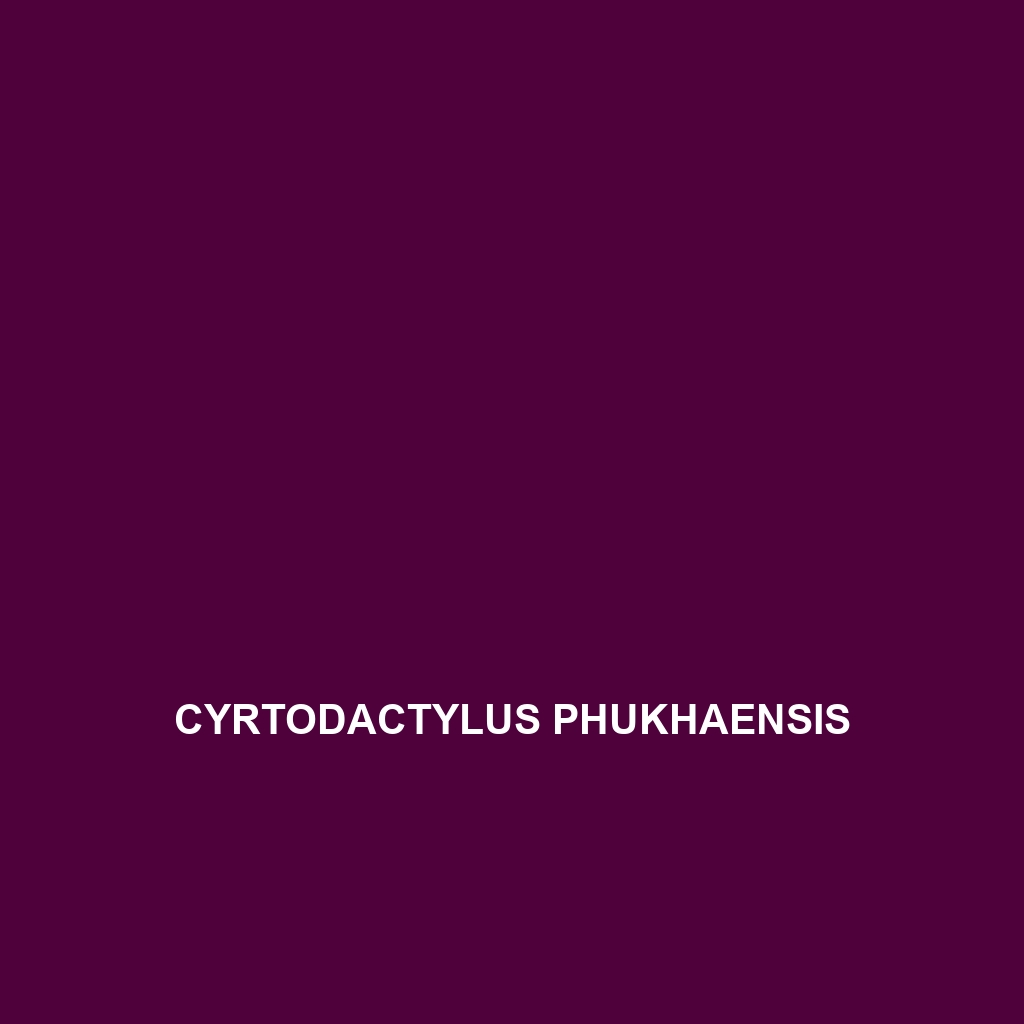Description of Cyrtodactylus phukhaensis
Common Name: Cyrtodactylus phukhaensis
Scientific Name: Cyrtodactylus phukhaensis
Habitat: This species is primarily found in the tropical and subtropical regions of Southeast Asia, particularly in the mountainous areas of Thailand. Cyrtodactylus phukhaensis prefers habitat types such as limestone karsts and subtropical forests, where it often resides in rocky crevices, on walls, and around leaf litter in humid environments, providing sufficient cover and moisture.
Physical Characteristics: Cyrtodactylus phukhaensis is a medium-sized gecko, typically measuring between 10 to 15 centimeters in length. Its coloration varies from beige to light brown with distinctive dark brown or black banding along its body. The species features a flattened body, elongated limbs, and a broad head, with toe pads that allow for adept climbing and gripping surfaces. These physical adaptations make it well-suited for its rocky habitat.
Behavior: This gecko is primarily nocturnal, displaying an active lifestyle during the night. It is known for its climbing abilities, often seen scaling rock faces and trees in search of food. Cyrtodactylus phukhaensis exhibits territorial behaviors, with males frequently engaging in displays to ward off rivals. Vocalizations may also be heard during mating rituals or territorial disputes.
Diet: The diet of Cyrtodactylus phukhaensis consists mainly of insects and other small invertebrates. Common food sources include crickets, beetles, and moths, which they catch using their agile movements and quick reflexes. This insectivorous diet is crucial for their energy needs and overall growth.
Reproduction: Cyrtodactylus phukhaensis typically breeds during the warm and humid months of the year. The female lays a clutch of 1-2 eggs in a hidden location among rocks or leaf litter. The eggs have a sticky surface that allows them to adhere to surfaces, providing some protection against predators. The hatchlings emerge after an incubation period of around 30 to 50 days, fully equipped to start foraging and climbing shortly after.
Conservation Status: Currently, Cyrtodactylus phukhaensis is classified as ‘Vulnerable’ on the IUCN Red List due to habitat loss from deforestation and urbanization. Conservation efforts are needed to protect their natural habitats and mitigate the impact of human activities on their populations.
Interesting Facts: Cyrtodactylus phukhaensis is often noted for its ability to change coloration slightly in response to its surroundings, providing a form of camouflage against predators. Additionally, this species is relatively less studied compared to other geckos, making it an exciting subject for herpetologists and wildlife enthusiasts alike.
Role in Ecosystem: As a predator of various insects, Cyrtodactylus phukhaensis plays a significant role in controlling insect populations within its habitat. Furthermore, its presence in the ecosystem serves as a food source for larger predators, thereby contributing to the ecological balance. Protecting this species is essential for maintaining the biodiversity of its native environments.
